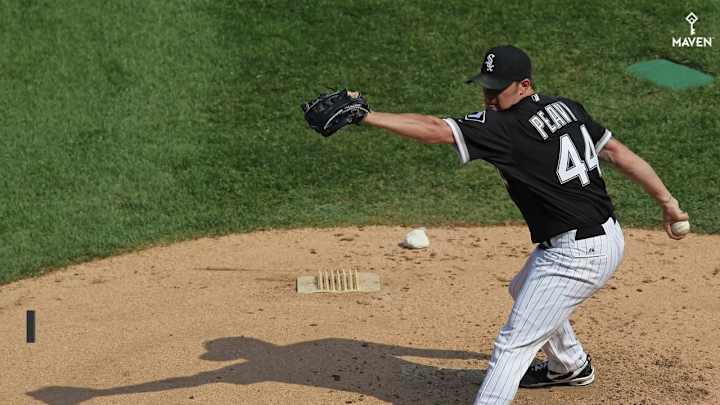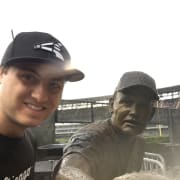Injury-Shortened Sox Seasons: Jake Peavy lat derails 2010 for Chicago

Hop into a time machine back to 2010 for the Chicago White Sox, and it was an electric year. After a mediocre 2009, there still existed the residual core from the 2008 playoff club, and even key remnants from the 2005 championship team.
It was a last hurrah of sorts – while 2011 was marketed as "All In" and 2012 served as a mirage – the 2010 club was arguably the last good White Sox team, boasting the highest win total (88) of the entire 2010s.
It was quite thrilling, too, featuring a 26-5 run that included 11-game and nine-game win streaks embedded into a resurgence that took Chicago from 24-33 (9 ½ games back in the AL Central) on June 8 to first place by July 11 and 12 games better than .500 on the 15th, when they carried the streak into the All-Star break.
Outside of an aberration-laden, "What in the Heck" Hawkism-worthy 33 games in 2016, it was the last time the White Sox were unequivocally the talk of the league.
Lost in the sea of winning was an iceberg that appeared on July 6, when front-end righthander Jake Peavy tore his right latissimus dorsi tendon in his lower back.
If you want to partake in the most obscure corners of White Sox trivia, tell your friends the injury occurred in the second inning, with two outs, a 2-2 count and on Peavy's 22nd pitch of the game, and see if they do a double-take.
You could tell the injury was serious; Peavy began to make his way toward the dugout almost immediately after landing at the front of the mound.
The tendon was completely torn off of the bone. The injury was exceptionally rare, and Peavy's eventual surgeon – Dr. Anthony Romeo of Midwest Orthopedics at Rush– said no Major League Baseball player at that point had ever had reparative surgery on that type of injury and fully recovered.
In other words, the nature of Peavy's injury had been inherently career-ending, worse than a UCL tear and akin to what an ACL injury meant to a basketball player before the surgical medicine improved in the 1990s.
Dr. Romeo had the romantic touch of the Shakespeare character, as some tender love and care for Peavy's tendon remarkably had him back on a mound by spring training in 2011.
He was a trailblazer from that point forward, being the first big league pitcher to not only reach a professional mound again, but to find success on it to boot.
Peavy made 18 starts in 2011, with a lackluster 4.92 ERA but a much more respectable 3.21 FIP, all the while cracking 100 innings in a timeshare between starts and the bullpen.
The 2012 season saw him make the All-Star team with a 3.37 ERA, an incredibly durable 219 innings, and a K-rate per nine north of eight.
It was a renaissance for a pitcher who had won the Cy Young back in 2007 with the San Diego Padres. He led all of baseball in 2007 in ERA (2.54), strikeouts (240), FIP (2.84), WHIP (1.061) and led the NL in wins (19) and K/9 (9.7). That was good for a pitcher's Triple Crown.
All of that was on the heels of previous brights spots with San Diego in his early 20s. A stellar, six-season track record and a Cy Young season translated into a three-year/$52 million extension ahead of 2008 set to begin after his final two years of control expired.
Peavy had a 2.85 ERA in 2008, but missed a handful of starts due to a sore elbow. That offseason, the Padres flirted with a variety of clubs on a Peavy blockbuster, trying to bring in young talent and shed salary.
Peavy preferred an NL team, and something almost came together with the Atlanta Braves in November, but after that fizzled, the White Sox had a deal in place for him on May 21, aiming to snatch the righty in exchange for Aaron Poreda, Clayton Richard and two players to be named later.
Peavy ultimately blew up the trade, citing that it wasn't in the best interest of his family, but the industry believed the rationale was Peavy wanting to pitch for an NL club and hoping to be competitive.
Ironically, it was injury that eventually sent Peavy to Chicago in 2009.
Literally the day after the White Sox trade fell apart, Peavy injured his ankle rounding a bag and ended up on the IL on June 12.
With the Padres eager to cash in on their big trade trip, they revived talks with Chicago and reached an 11th-hour deadline deal on July 31 for that original package (Clayton Richard and Aaron Poreda) in addition to Adam Russell and Dexter Carter.
At that time, Peavy was thought of as a secondary ace for the White Sox behind durable southpaw Mark Buehrle. Chicago was also just a couple of games out of the division, and such competitiveness and continued interest from the White Sox may have shifted Peavy's thinking.
Chicago took on all of Peavy's guaranteed money, for the rest of 2009 through 2012, which amounted to close to $60 million when including the $4 million 2013 buy-out clause.
The White Sox missed the 2009 postseason, despite hanging around in late August and Peavy making three starts around that time, going 3-0 with a 1.35 ERA
So, back to 2010.
With Peavy's trailer showing the prior season and desire to cement ace status with his new team, expectations were understandably high.
Peavy struggled out of the gate, with a 2-5 record and 6.05 ERA, but was truly starting to fire on all cylinders prior to injury, helping drive Chicago's 2010 June-July surge by winning five consecutive starts with a 1.99 ERA.
Daniel Hudson tried to pick up the slack for Peavy, but was brutal over three starts and would eventually be dealt in exchange for Edwin Jackson at the trading deadline. Despite the expectation Jackson would be used as a conduit trade chip for rental slugger Adam Dunn, that deal never materialized.
Jackson actually pitched remarkably well for 11 starts in 2010, with a 3.24 ERA and K/9 over nine.
But Peavy had been on an ace trajectory, and with Chicago finishing with 88 wins and six games out of first place, White Sox fans will always be left to wonder whether a surefire card at the top of the deck could have tipped the scales.
In 2011, Peavy's return led to an interesting dilemma for Chicago. With temporary placeholder Phillip Humber pitching exceptionally, the team basically went with a six-man rotation for the balance of the season with no clear odd-man out – something no club hasn't done for that same extended period since.
Peavy's injury and Romeo's surgery was groundbreaking. Romeo even published a medical paper covering the process in 2019. Big names from Clayton Kershaw to Noah Syndergaard have experienced "lat" injuries since — but none have been as extreme as Peavy's injury.
Nonetheless, Peavy put this injury into the limelight, and going forward Romeo's treatment plan will likely be the standard. No longer must serious lat injuries end careers. But so far, Peavy is the only pro to have such a surgery.
While Peavy's injury may have altered 2010 for the White Sox, his was far from a broken career.
Peavy finished with a solid 3.63 ERA, 2,000 plus strikeouts, a K/9 of more than eight, and a shelf-full of accolades: Cy Young (2007), Gold Glove (2012), three All-Star appearances, and two consecutive World Series rings – first with the Red Sox in 2013 after a deadline deal with the White Sox and then again with the San Francisco Giants in 2014 after being shipped from Boston in a trade-deadline transaction.
Not bad for a 15th-rounder out of high school back in 1999.
